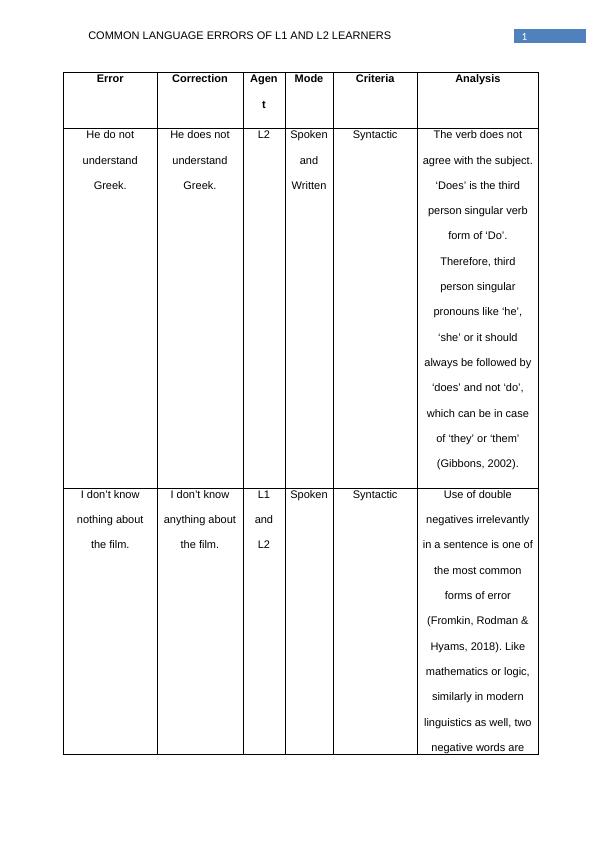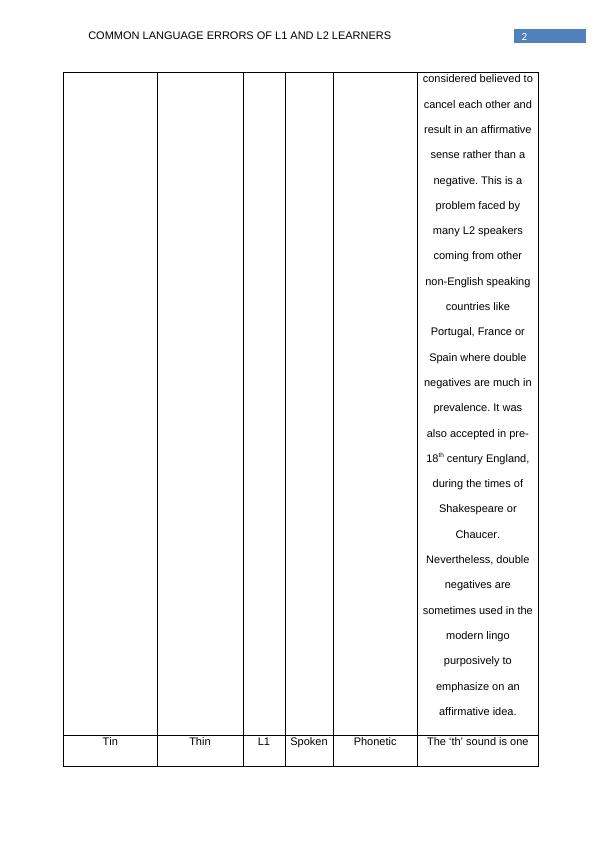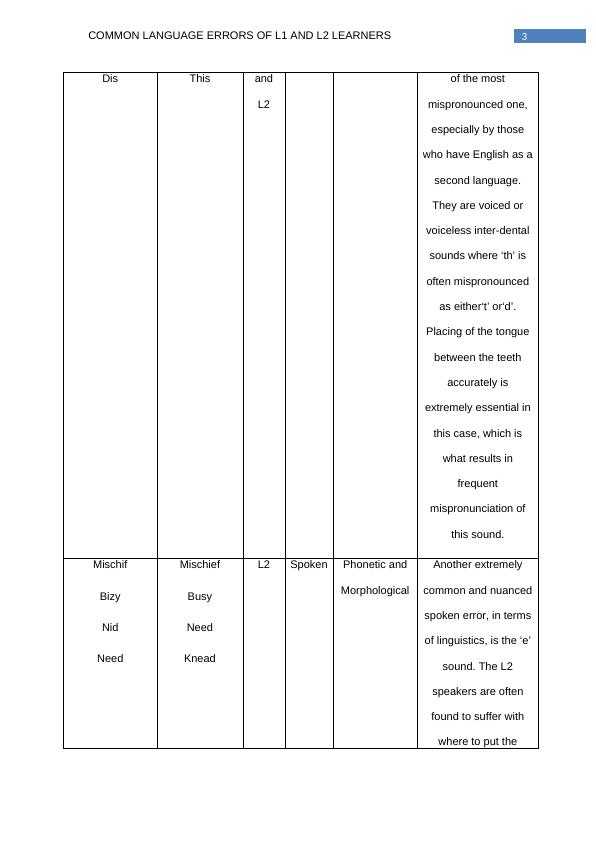Common Language Errors of L1 and L2 Learners
Students are required to collect twenty language errors made by L1 and L2 speakers of English, analyze each error according to specific categories, and present the results in table form.
17 Pages2287 Words471 Views
Added on 2023-06-04
About This Document
This article discusses the common language errors made by L1 and L2 learners in English. It covers errors in syntax, phonetics, morphology, semantics, and competence. The article also provides corrections and their impact on development.
Common Language Errors of L1 and L2 Learners
Students are required to collect twenty language errors made by L1 and L2 speakers of English, analyze each error according to specific categories, and present the results in table form.
Added on 2023-06-04
ShareRelated Documents
End of preview
Want to access all the pages? Upload your documents or become a member.
Teacher Language Awareness | Assessment 1
|4
|870
|11




